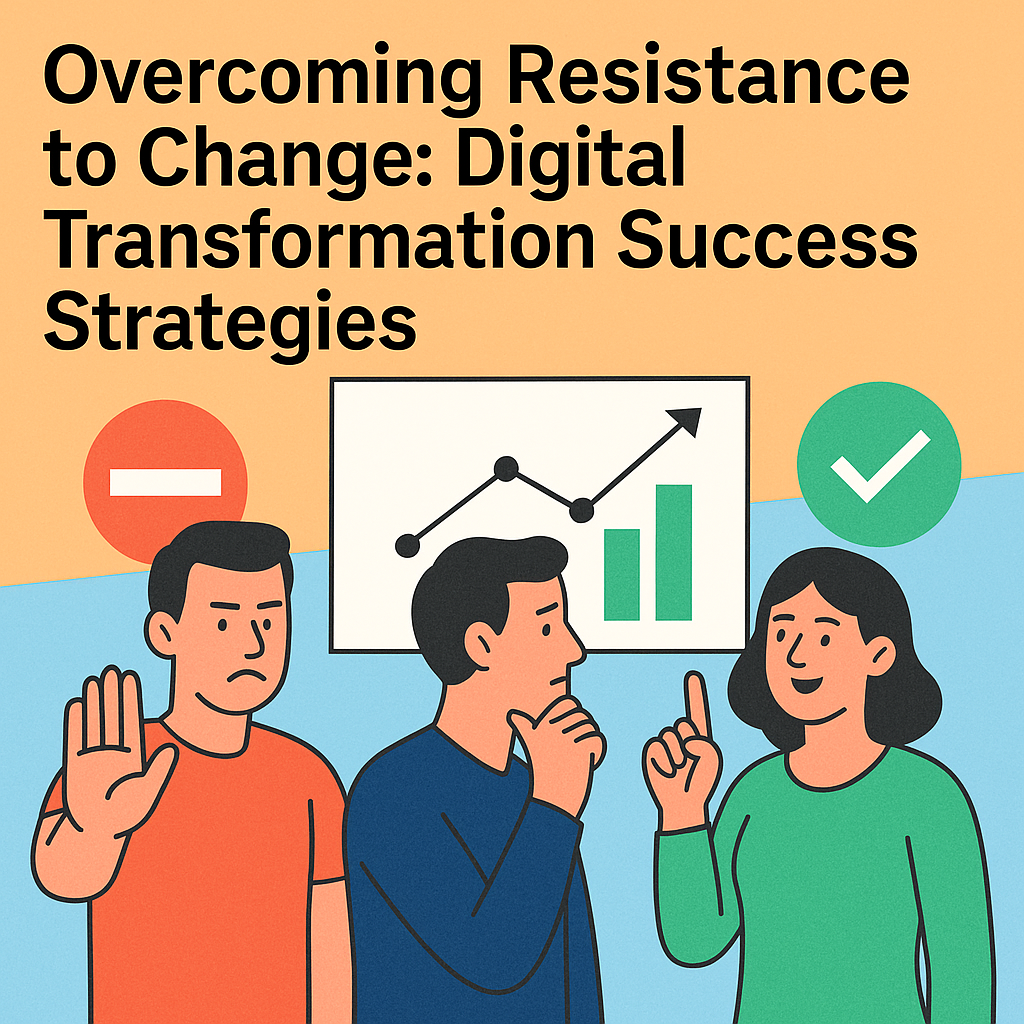In today's relationship driven marketplace, the strategic selection and implementation of a Customer Relationship Management (CRM) system significantly differentiates your business, providing a competitive edge and fostering unparalleled customer relationships. Here at Yopla, we're all about "making business better". We do this not just by using advanced digital tools, but by creating a space where everyone's ideas matter and we can all adapt and grow into powerful technologies like CRM.
In this guide the team has put together our "quick advice" on how to go engage in a holistic approach to CRM selection and implementation, ensuring that your organisation is fully equipped to embrace the digital transformation journey ahead.
Understanding Digital Maturity: The Bedrock of Your CRM Strategy
The journey towards selecting the right CRM begins with a comprehensive assessment of your organisation's digital maturity. This process should go beyond merely evaluating your current technological stack; it should delve into the core elements that define your readiness and capacity for digital transformation. You'll need to consider:
- Cultural Readiness: The digital culture within your organisation sets the tone for any technological adoption. A culture that is receptive to change, values innovation, and is willing to embrace new ways of working is fundamental. This readiness ensures that the introduction of a CRM system is met with enthusiasm and a collective drive towards maximisation of its potential.
- Capability Analysis: The success of a CRM system is largely dependent on the capabilities of your team to leverage its features to the fullest. This involves assessing existing digital skills, identifying gaps, and understanding the training needed to bring your team up to speed. Ensuring your team's capabilities align with the demands of the new system is crucial for its effective utilisation.
- Credibility Assessment: Evaluating the reliability and efficiency of your current digital processes provides insights into how a CRM can enhance or redefine your operations. It's about understanding the strengths of your existing systems and the opportunities for improvement that a CRM can address.
- Alignment with Mission: Your organisation's mission and strategic objectives are the guiding stars of any technological adoption. The CRM you choose should not only support your current goals but also have the flexibility to adapt as your organisation evolves.
Taking the time to thoroughly assess these elements of digital maturity not only prepares your organisation for a CRM but also ensures that the selected system is the best fit for your unique needs and long-term vision.

Selecting the Right CRM: Navigating the Complex Landscape
The selection of a CRM is a pivotal decision that influences various aspects of your business operations. To navigate this complex landscape effectively, consider the following key elements:
- Integration Capabilities: The ability of the CRM to integrate seamlessly with your existing tools and platforms is essential for creating a cohesive technological ecosystem within your organisation.
- User-Friendliness: The user interface and overall ease of use of the CRM play a significant role in its adoption rate among your team members. A system that is intuitive and straightforward encourages widespread use and minimises the learning curve.
- Customisation and Scalability: The selected CRM should be adaptable to your unique business processes and scalable to accommodate future growth, ensuring longevity and relevance as your organisation evolves.
- Data Analytics and Reporting: Advanced analytics and reporting capabilities are crucial for transforming raw data into actionable insights, empowering informed decision-making across the board.
- Support and Dependencies: Understanding the level of internal and external support required to implement and maintain the CRM is vital. Some platforms may demand extensive technical configuration and ongoing support, highlighting the need for a clear plan regarding dependencies and resource allocation.
- Vendor Support: The support provided by the CRM vendor, including training resources, customer service, and community forums, is invaluable for troubleshooting and optimising the use of the system.
CRM as the Central Hub of Business Operations
The ultimate aim of implementing a CRM system is to centralise all customer-related intelligence and activities, making it the central hub of your business operations. This centralisation offers a multitude of benefits:
- Unified Customer View: A CRM provides a comprehensive view of each customer, aggregating all interactions, transactions, and feedback, which facilitates personalised engagement and superior customer service.
- Streamlined Operations: The automation of routine tasks and the optimisation of workflows across marketing, sales, and customer service departments enhance operational efficiency and reduce the potential for errors.
- Informed Strategic Decisions: The centralisation of data within the CRM offers invaluable insights into customer behaviours, sales trends, and marketing effectiveness, driving data-driven strategic decisions.
- Collaborative Synergy: A unified CRM fosters collaboration among teams by providing shared access to critical customer information, facilitating cross-functional initiatives, and ensuring a cohesive approach to customer engagement.

Preparing for the Impact of Enhanced Efficiency
The increased efficiency and automation brought about by a CRM system can significantly transform your business operations. Preparing for these changes is crucial:
- Redistribution of Time: The automation of tasks will free up valuable time for your team. Strategically planning the reallocation of this time to higher-value activities can maximise the benefits of the newfound efficiency.
- Managing Team Expectations: The shift towards automation may raise concerns among team members regarding the evolution of their roles. Transparent communication about the opportunities for professional development and the shift towards more strategic tasks is key to managing these expectations.
- Focus on Re-skilling: The demand for digital skills will rise with the implementation of a CRM. Investing in re-skilling and upskilling initiatives ensures your team is equipped to thrive in a CRM-enhanced environment.
Our Top 10

Here's our top 10 checklist, a handy tool you can copy and paste into your project management tool or to-do list, ensuring that you've covered all bases for CRM readiness:
- Evaluate Organisational Culture for Digital Adaptability: Confirm that your organisational culture is primed for digital change, with a workforce ready to embrace and leverage a new CRM system.
- Test Your Teams Digital Proficiency: Understanding how effective your team are at using technology is vital to the success of increasing digitisation. Pinpoint areas where training or upskilling will make a difference.
- Audit Existing Digital Infrastructure: Review the efficiency and integration capabilities of your current digital systems to understand how a CRM can complement or enhance these setups.
- Ensure CRM Aligns with Strategic Goals: Verify that the CRM system under consideration supports and is capable of evolving with your organisation's strategic objectives.
- Identify Essential CRM Features and Functionalities: Clearly define the critical features and functionalities your CRM must possess to meet your specific business requirements.
- Consider Integration with Current Tools: Develop a comprehensive plan for the CRM's integration with existing platforms, ensuring data compatibility and workflow continuity.
- Determine Customisation and Growth Capacity: Outline the customisation needs for the CRM to fit your business processes and its scalability potential to accommodate future growth.
- Understand Support and Technical Dependencies: Assess the level of both internal and external support necessary for implementing and maintaining the CRM, considering any technical dependencies that may arise.
- Prepare for the Impact of Increased Efficiency: Plan for the downstream effects of enhanced efficiency, such as reallocating freed-up time to strategic initiatives and addressing changes in team roles and responsibilities.
- Develop a Comprehensive Change Management and Training Plan: Craft a detailed plan for managing the transition to a new CRM, including strategies for team communication, training, and adaptation support.
Conclusion
Choosing and implementing a CRM system is a strategic endeavour, that necessitates a comprehensive understanding of your organisation's digital maturity, careful consideration of the CRM's features and capabilities, and thorough preparation for the organisational changes it will usher in.
At Yopla, we help our clients through this transformative journey every day, ensuring that the CRM systems they choose not only meets their immediate needs but also positions their businesses for sustained resilience and growth.
As you navigate this path, remember that the right CRM has the potential to revolutionise your business operations, making them more efficient, data-driven, and customer-centric.
For further insights and guidance on CRM strategies and digital transformation, visit our blog or get in touch team@yopla.co.uk








